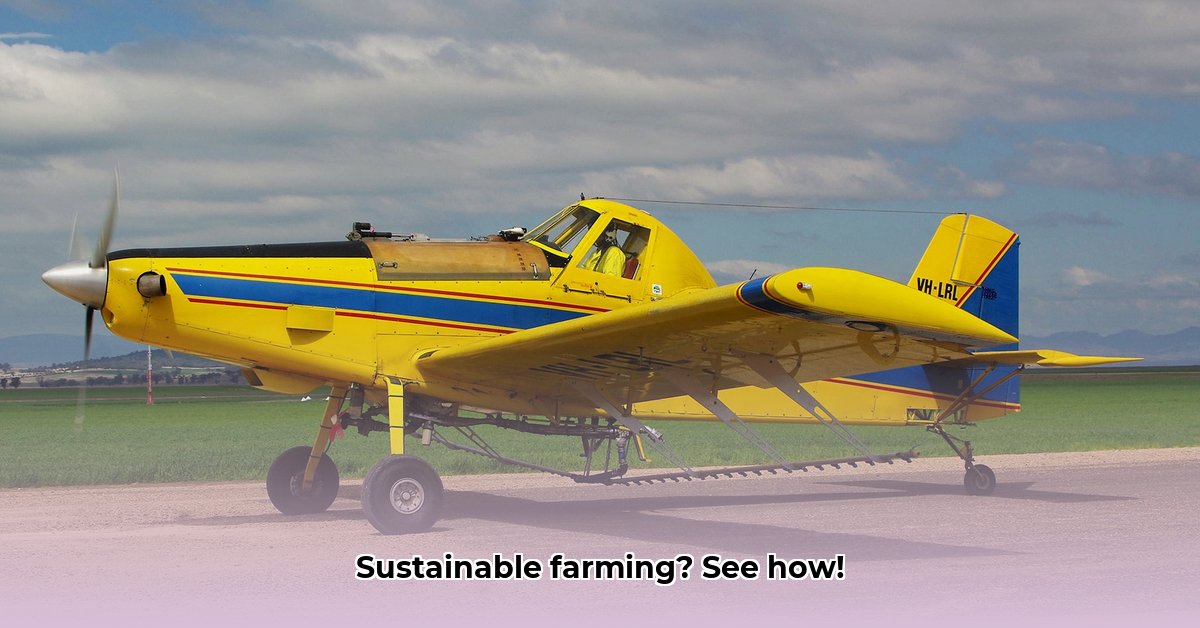
Air Tractor AT-502B: A Giant Leap for Farming?
The Air Tractor AT-502B is revolutionizing agricultural practices. This powerful aircraft, capable of carrying up to 500 gallons of agricultural chemicals (fertilizers, pesticides, etc.), significantly increases operational efficiency. Fewer passes over fields translate to lower fuel consumption and time savings for farmers. However, the question of its overall environmental sustainability remains a critical area of investigation. This article delves into the AT-502B’s capabilities, its potential impact on sustainable agriculture, and the crucial need for further research to fully assess its long-term environmental footprint. For comparison, see information on the Air Tractor AT-802A Fire Boss.
A Big Bird with Big Capabilities
The AT-502B's primary advantage is its substantial payload capacity. This allows farmers to cover vast areas in fewer flights, resulting in significant cost savings and increased productivity. The reduced number of trips directly impacts fuel consumption, a key factor in both operational efficiency and environmental impact. But how does this efficiency translate into practical benefits for farmers? One farmer reported a 30% increase in acreage covered per day compared to ground-based application. This increased productivity translates directly into economic advantages and a quicker turnaround for planting and harvesting.
Isn't it remarkable how technology can improve farming efficiency? But the effects on the environment deserve scrutiny.
The Sustainability Elephant in the Room
While the AT-502B undoubtedly boosts efficiency and reduces fuel consumption per acre, a comprehensive assessment of its overall environmental impact is currently lacking. We need robust data on greenhouse gas emissions per acre treated to accurately evaluate its sustainability. Currently, estimations of the net environmental effect are inconclusive. Some experts believe that reduced fuel consumption per acre might offset the emissions from individual flights, but further research—including comparisons to ground-based spraying methods—is crucial to confirm or refute this hypothesis.
Looking Ahead: Technological Advancements and Uncertainties
The newer AT-502XP model boasts improved performance in challenging conditions. While this enhances operational capabilities for farmers in diverse climates, its precise environmental impact remains unquantified. The expectation is improved fuel efficiency, but rigorous, independent testing is vital to determine the extent of this improvement.
Taking Action: A Collaborative Effort for a Sustainable Future
Achieving sustainable agricultural practices hinges on collaborative efforts from various stakeholders:
Farmers: Evaluate operational costs, considering the AT-502B's potential benefits and limitations. Long-term, invest in newer, potentially more efficient models.
Air Tractor Manufacturers: Fund independent environmental impact studies. Develop and implement environmentally friendly materials and aircraft designs.
Governments/Regulators: Encourage comprehensive data collection on agricultural aircraft emissions. Implement policies that incentivize the adoption of efficient and sustainable aerial application technologies.
Researchers: Conduct life-cycle assessments of various aircraft models. Explore alternative, more sustainable fuels and engine technologies.
Managing Risks: A Realistic View
Potential risks associated with AT-502B operation can be proactively addressed:
| Risk Factor | Probability | Impact | Mitigation Strategy |
|---|---|---|---|
| Fuel Price Volatility | High | Medium | Diversify fuel sources; explore alternatives; consider hedging strategies. |
| Maintenance Costs | Medium | Medium | Preventative maintenance plan; negotiate service contracts. |
| Regulatory Changes | Medium | High | Stay informed about regulations; actively engage with regulatory bodies. |
| Lack of Environmental Data | High | High | Invest in or support comprehensive environmental impact assessments. |
| Pilot Shortages | Medium | Medium | Invest in pilot training programs; offer competitive salaries. |
The Final Verdict: A Promising Future, but with Ongoing Questions
The AT-502B offers significant potential for increased efficiency and productivity. However, its long-term sustainability requires further research into its environmental impact. A comprehensive understanding of its ecological footprint is essential for responsible use and the advancement of sustainable agricultural practices. Collaboration among all stakeholders is key to unlocking the technology’s full potential while mitigating potential risks.